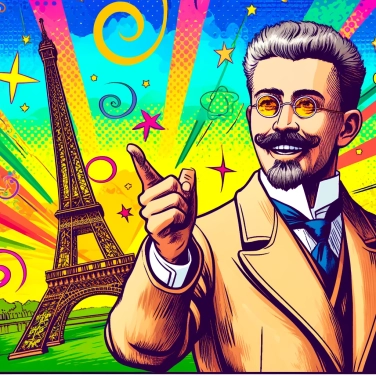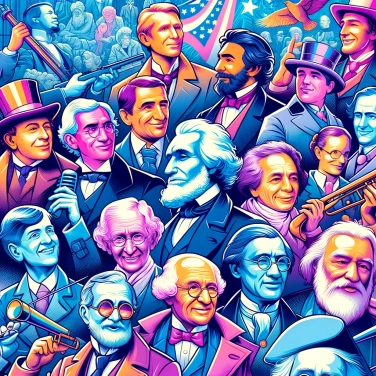Gustave Eiffel built the Eiffel Tower for the 1889 Paris Universal Exposition. He also wanted to demonstrate the potential of puddled iron, a recent and revolutionary material for that time.

In 1889, Paris hosted the World's Fair, a major international gathering designed to showcase the technical, industrial, and cultural achievements of the participating countries. On this occasion, France wanted to make a strong statement and celebrate the centenary of the French Revolution. The idea was to demonstrate national power and ingenuity. Gustave Eiffel then proposed an ambitious project: to build a monumental structure that would impress visitors from all over the world. This gigantic tower quickly became the star of the expo, even attracting those who doubted that such a challenge could be met. Eiffel's goal was clear: to astonish, impress, and assert the superiority of French craftsmanship.
Through the construction of his famous tower, Gustave Eiffel wanted to showcase the technical and industrial capabilities of France. At the time, the country was thriving in areas such as metallurgy, civil engineering, and metal construction. This spectacular monument, assembled from thousands of riveted prefabricated wrought iron pieces, was intended to impress the entire world with its strength, lightness, and especially the French efficiency in engineering. Eiffel also wanted to prove concretely, on a large scale, that he mastered truly complex technical challenges, such as wind resistance and vibrations at height. It was a visible demonstration that French engineers knew how to push the known limits further.
At the time, the Eiffel Tower clearly represented a technical feat that symbolized all the industrial and technological power of France. Building a 300-meter iron tower was frankly ambitious: it became a true symbol of technical progress. Its bold architecture demonstrated to the world what metal, the quintessential modern material at the time, could now achieve. The tower embodied the absolute confidence placed in science and industry during the industrial era, attracting international curiosity towards French achievements. It symbolized this radical shift towards an era marked by powerful machines, revolutionary metal structures, and high-level engineering capable of defying all known limits.
Creating an iron tower over 300 meters tall was quite bold in 1889. But Gustave Eiffel thought big, very big. Passionate and audacious, he wanted to leave an indelible mark on Paris and make history with his name. For him, this structure was meant to reflect the strength of technical progress, but it was also a personal challenge: to show the world his creative genius and absolute mastery of engineering. While some harshly criticized him, calling his tower ugly and useless, Eiffel maintained an unwavering confidence in his project. With determination and vision, he proved that his ideas, even the wildest, were solid, achievable, and remarkable. Today, it's impossible to imagine Paris without the famous "Iron Lady" designed by this remarkable visionary.
More than 18,000 metal parts and 2.5 million rivets were used to assemble the Eiffel Tower, an extraordinary logistical challenge for its time.
At its opening in 1889, the Eiffel Tower was the tallest man-made structure in the world at 300 meters, and it held that title until the completion of the Chrysler Building in New York in 1930.
Gustave Eiffel had set up a laboratory on the third floor of the Eiffel Tower, where he conducted various scientific experiments, particularly in meteorology and aerodynamics.
The Eiffel Tower was heavily criticized by famous artists and writers during its construction, with some calling it a 'useless monstrosity' or a 'tragic lamp post' before ultimately becoming a global icon.
The Eiffel Tower currently stands at a height of 330 meters due to the addition of broadcasting antennas, but it originally measured 300 meters when it was completed in 1889.
No, it was originally meant to be kept for only 20 years. However, its scientific and technical utility as a radio antenna has ensured its continued presence in the Parisian landscape.
At its construction, the Eiffel Tower was criticized mainly for aesthetic reasons. Many artists and intellectuals found its bold design too industrial and foreign to the classical architectural heritage of Paris.
The construction of the Eiffel Tower lasted about two years, two months, and five days, from January 28, 1887, to March 31, 1889, an impressive achievement for that time.
Initially, the Eiffel Tower was intended to serve as an iconic entrance to the 1889 World's Fair and as a symbol of French technical expertise. It was later used as a weather station, scientific laboratory, and radio transmitter.

0% of respondents passed this quiz completely!
Question 1/7